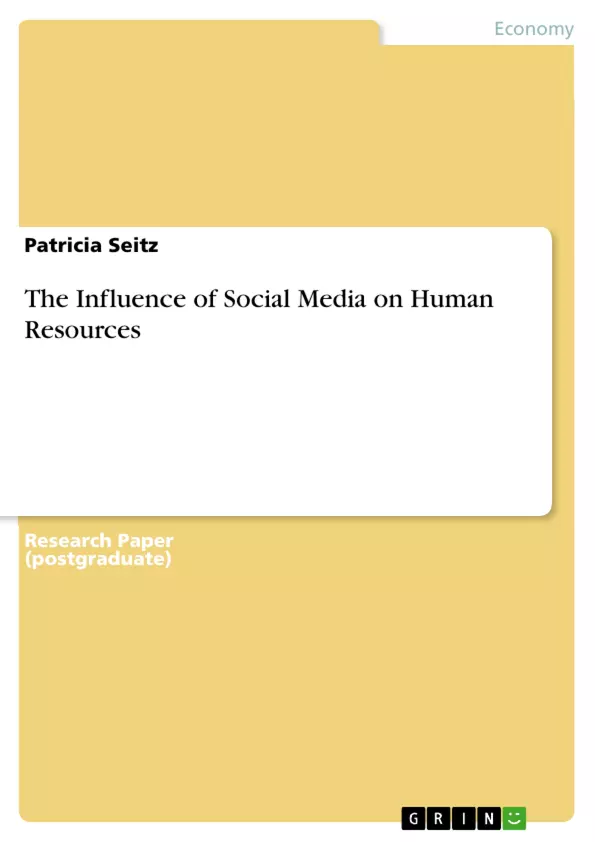The following paper is concerned with the use of social media in the human resources departments of companies. To do this, the first part of the paper explains the different generations and their thinking about social media. It is necessary to define social media that people understand further in the paper what it means.
The main part of the paper focuses on the use of social media in the hiring process and the use for current employees. There will be a description of the use for employers and candidates/employees.
The result of the research shows that social media makes it easier for employers to find qualified candidates. Also, current employees should be allowed to use social media while they are at work, but with limitations.
Inhaltsverzeichnis (Table of Contents)
- The influence of social media on human resources
- Abstract
- Theoretical Background
- The hiring process
- Employer
- Applicant
- Current employment
- Employer
- Employee
- Conclusion
- References
Zielsetzung und Themenschwerpunkte (Objectives and Key Themes)
This paper explores the impact of social media on human resources departments in companies. It analyzes the use of social media in the hiring process and for current employees, examining how different generations interact with social media and how this affects their use in the workplace.
- The influence of different generations on social media use in human resources
- The role of social media in the hiring process
- The impact of social media on current employees
- The benefits and challenges of integrating social media into the workplace
- The need for policies and guidelines regarding social media use by employees
Zusammenfassung der Kapitel (Chapter Summaries)
- The influence of social media on human resources: This chapter introduces the topic and highlights the increasing importance of social media in human resources, particularly in the hiring process and for current employees. It also discusses the different generations and their attitudes towards social media in the workplace.
- Theoretical Background: This chapter provides a broad overview of social media, defining it and outlining its various types and uses. It highlights the significance of social media in professional networking, marketing, recruiting, and customer service. The chapter also lists popular social media platforms and their specific functions.
- The hiring process: This chapter focuses on the use of social media in the hiring process. It examines how employers utilize social media to find and assess potential candidates, while also discussing the implications for applicants. This section may address issues like privacy concerns and online reputation management.
- Current employment: This chapter delves into the use of social media for current employees. It explores the benefits and challenges of allowing employees to use social media during work hours, including productivity concerns, company image, and communication strategies. This section might also discuss policies and guidelines for social media use in the workplace.
Schlüsselwörter (Keywords)
The main keywords and focus topics of this paper include social media, human resources, hiring process, employee engagement, generational differences, online reputation, workplace policies, social media platforms, and professional networking.
- Quote paper
- Bachelor of Arts Patricia Seitz (Author), 2015, The Influence of Social Media on Human Resources, Munich, GRIN Verlag, https://www.grin.com/document/313258



